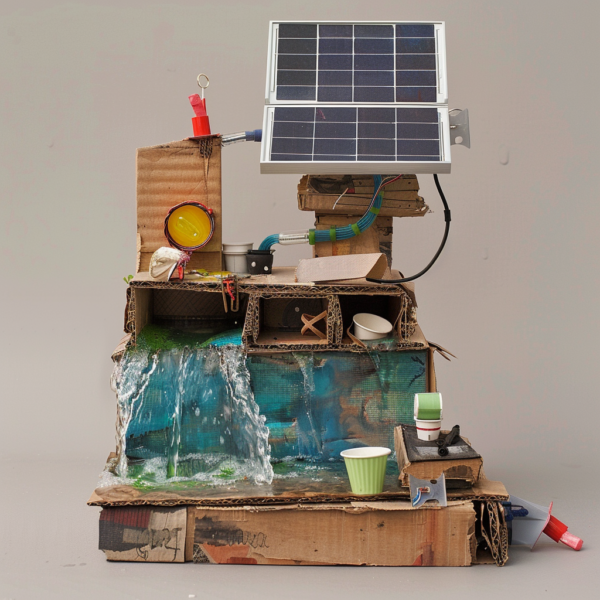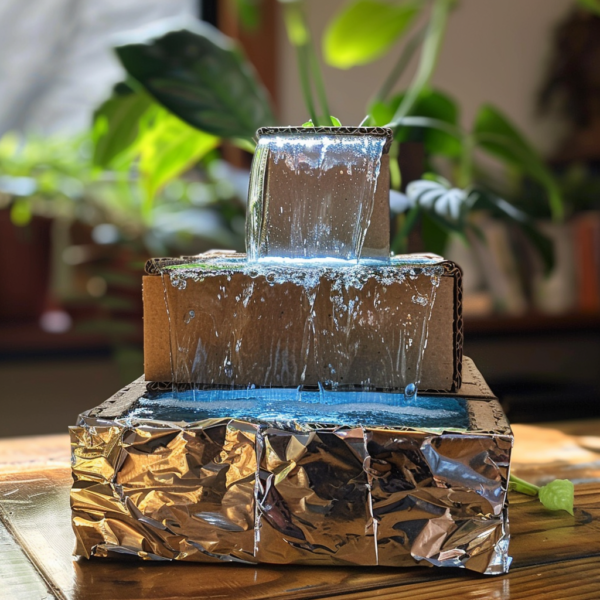Activity #3: Moving Water
Materials: Water, multimeters, scissors. tubing, cardboard, hot glue guns, colored markers (food coloring, straws, 250 mL graduated cylinders.
STEP 1: Before we begin our next activity, watch the video below to see how sunlight, weather, water, and climate all connect and influence one another. This will help you understand how energy from the sun drives weather systems, powers the water cycle, and shapes climate conditions around the world. As you watch complete the summary in your workbook.
STEP 2: It is now your turn to build your own water pump powered by the sun! Bring your solar panel outside and follow the method in the video below to test the voltage across your panel using the multimeter provided.
STEP 2: Choose an outdoor spot where you and your team will work. Adjust the direction and angle of your solar panel to get the highest voltage. Watch the video below for tips on how to position your panel for the best sunlight.
STEP 3: Now that you have identified the optimal location and angle for your solar panel, use this video as a guide to properly set up your water pump.
STEP 4: Now that your solar panel is set up and your water pump is running, it’s time to test how well it performs. In this experiment, you’ll measure the flow rate of your solar-powered water pump in milliliters per minute. Using the materials provided—especially the graduated cylinder—your challenge is to design an experiment that gives you clear, accurate data. You’ll come up with a research question, test your design, and record your results. Think about what you might want to explore—like how angle, sunlight, or time of day might affect how much water the pump moves. Choose one of the questions below (or create your own) to guide your experiment. Then, follow the steps in your workbook to carry it out.
- How does the angle of the solar panel affect water flow rate?
- How does the strength of sunlight (shade vs. direct sun) affect the pump’s performance?
- Does the position of the water intake change how much water is pumped?
- How consistent is the flow rate over time?
STEP 5: Now that you’ve found the best location for your solar panel and measured your pump’s flow rate, it’s time to put your solar-powered water pump to work. Choose one of the challenges below—or come up with your own creative idea. You can build a water-powered artwork that uses moving water to bring a design to life, or create a small irrigation model that uses bottles, straws, and other materials to water a pretend garden. Use the photos below for inspiration, and be sure to upload a short video of your finished project using the QR code provided in your workbook. Type your first name in the “Subject” line when you submit. You can also view example projects here.


